
Overview
The biotechnology industry is a sector that encompasses the application of biological and technological principles to develop innovative products, technologies, and solutions aimed at improving human health, agriculture, and the environment. It involves the use of living organisms, biological systems, and their components to create or modify products, processes, or services for various applications. Biotechnology encompasses a wide range of applications, including healthcare, agriculture, industrial processes, and environmental management. In the healthcare sector, biotechnology plays a crucial role in the development of new drugs, vaccines, and therapies for treating diseases. It involves techniques like genetic engineering, recombinant DNA technology, and cell culture to create pharmaceutical products that target specific diseases or enhance human health.
GAO Tek’s life science equipment have the following applications in biotechnology industry:
- Research and Development: GAO Tek’s life science equipment is indispensable in biotechnology research and development. Instruments such as centrifuges, spectrophotometers, PCR machines, and gene sequencers enable scientists to study genes, proteins, and cellular processes. These tools aid in the discovery and characterization of new molecules, understanding disease mechanisms, and developing innovative therapies.
- Drug Discovery and Development: Our life science equipment is vital in the process of drug discovery and development. High-throughput screening platforms, robotic systems, and automated liquid handling systems allow for the rapid screening and analysis of large compound libraries. These instruments help identify potential drug candidates, evaluate their efficacy and safety, and optimize their formulation.
- Genetic Engineering: GAO’s life science equipment is extensively used in genetic engineering processes. Instruments like gene synthesis machines, gene editing systems (e.g., CRISPR/Cas9), and gene expression analyzers facilitate the manipulation and modification of genes in various organisms. This enables the creation of genetically modified organisms (GMOs) with desired traits for applications in agriculture, pharmaceutical production, and industrial processes.
- Bioprocessing and Biomanufacturing: Our life science equipment for large-scale production of biotechnological products. Bioreactors, fermenters, filtration systems, and purification equipment are used to cultivate and optimize the growth of cells or microorganisms to produce recombinant proteins, antibodies, vaccines, and other biopharmaceuticals. These instruments ensure efficient and controlled production processes.
- Quality Control and Analysis: GAO’s life science equipment is employed for quality control and analysis of biotechnological products. Analytical instruments such as mass spectrometers, chromatography systems, and electrophoresis systems enable the identification, quantification, and characterization of molecules and their impurities. These tools ensure product quality, consistency, and compliance with regulatory standards.
- Diagnostics and Medical Testing: Our GAO’s life science equipment plays a role in diagnostic and medical testing procedures. Instruments like DNA sequencers, immunoassay analyzers, and medical imaging systems aid in the detection and diagnosis of diseases, monitoring of treatment efficacy, and patient profiling. These tools facilitate personalized medicine and improve patient care.
- Tissue Engineering and Regenerative Medicine: GAO’s life science equipment used by us is utilized in the field of tissue engineering and regenerative medicine. Bioreactors, cell culture systems, and imaging platforms support the growth, differentiation, and characterization of cells and tissues for the development of organ replacements, artificial skin, and other regenerative therapies.
Complying with Government Regulations
GAO Tek’s life science equipment complies or help our customers comply with the U.S. government regulations such as:
- Food and Drug Administration (FDA) Regulations: The FDA regulates life science equipment used in the biotechnology industry, particularly in the areas of medical devices, diagnostics, and biopharmaceutical production. This includes the classification, approval, and post-market surveillance of medical devices, as well as the regulation of diagnostic tests and assays.
- Good Laboratory Practices (GLP): GLP regulations, established by the Environmental Protection Agency (EPA), the FDA, and the Occupational Safety and Health Administration (OSHA), ensure the proper conduct of laboratory studies and the accuracy and reliability of data generated by these studies. GLP regulations apply to preclinical safety testing of biotechnological products and may encompass life science equipment used in these studies.
- Current Good Manufacturing Practices (cGMP): The FDA enforces cGMP regulations for the manufacturing, packaging, labeling, and quality control of biotechnological products, including those produced using life science equipment. cGMP regulations ensure that products are consistently produced and meet the required quality standards.
- Patent and Intellectual Property Laws: Intellectual property laws, including patent laws, protect inventions and innovations in the biotechnology industry. These laws provide legal protection for novel life science equipment, processes, and applications, ensuring that innovators can secure their rights and commercialize their technologies.
- Occupational Safety and Health Administration (OSHA) Standards: OSHA sets workplace safety standards, including those applicable to the biotechnology industry. OSHA regulations aim to protect workers from hazards associated with the use of life science equipment, such as chemical exposure, radiation safety, and ergonomic considerations.
- Export Controls and International Traffic in Arms Regulations (ITAR): The U.S. Department of State enforces export control regulations, including ITAR, to prevent the unauthorized transfer of sensitive technologies, including certain types of life science equipment, to foreign countries or entities.
- Department of Agriculture (USDA) Regulations: The USDA oversees the regulation of biotechnology products in agriculture, including genetically modified crops and organisms. USDA regulations cover the field testing, environmental impact assessment, and regulation of GMOs and life science equipment used in agricultural biotechnology.
- National Institutes of Health (NIH) Guidelines: The NIH provides guidelines for the research involving recombinant DNA molecules. These guidelines establish safety and containment measures for laboratories working with genetically modified organisms and life science equipment used in genetic engineering.
GAO Tek’s life science equipment complies or help our clients comply with the Canadian regulations such as:
- Health Canada Regulations: Health Canada is the regulatory authority responsible for overseeing the safety, efficacy, and quality of medical devices, pharmaceuticals, and biologics. Health Canada regulations cover life science equipment used in medical research, diagnostics, and therapeutic applications. These regulations include the Medical Devices Regulations, which establish requirements for the design, manufacturing, and labeling of medical devices.
- Canadian Food Inspection Agency (CFIA) Regulations: The CFIA regulates biotechnology products in the agricultural and food sectors. It oversees the safety and environmental risk assessment of genetically modified organisms (GMOs) used in agriculture, including biotechnology crops. CFIA regulations may pertain to the containment and transport of GMOs, including life science equipment involved in their handling and manipulation.
- Good Manufacturing Practices (GMP): Health Canada enforces GMP regulations for the manufacturing, packaging, labeling, and quality control of biotechnological products, including those produced using life science equipment. GMP regulations ensure that products are consistently produced and meet the required quality standards.
- Canadian Environmental Protection Act (CEPA): CEPA is the primary federal legislation that governs the assessment and management of substances and organisms that may have an impact on human health or the environment.
- Occupational Health and Safety Regulations: The Canadian Centre for Occupational Health and Safety (CCOHS) sets workplace safety standards applicable to the biotechnology industry. Occupational health and safety regulations cover various aspects, including the safe use of hazardous substances, radiation safety, and ergonomic considerations.
- Import and Export Regulations: The Canada Border Services Agency (CBSA) and Global Affairs Canada administer import and export regulations for biotechnology products, including life science equipment.
Case Studies of Life Science Equipment in Biotechnology Industry
Here are some practical examples of using life science equipment in biotechnology industry:
- Genentech: Genentech, a leading biotechnology company in the USA, implemented advanced DNA sequencers and gene expression analyzers in their research and development processes. These equipment helped them accelerate the discovery of new drugs and improve their understanding of disease mechanisms.
- Amgen: Amgen, a multinational biopharmaceutical company based in the USA, invested in high-throughput screening systems and automated liquid handling equipment. These technologies allowed them to efficiently screen and analyze large numbers of potential drug candidates, speeding up the drug discovery process.
- Illumina: Illumina, a prominent provider of genetic sequencing and array-based solutions, supplied their next-generation sequencing platforms to research institutions and biotech companies in both the USA and Canada. These platforms enabled researchers to analyze DNA and RNA sequences more rapidly and accurately, facilitating genomics research and personalized medicine.
- STEMCELL Technologies: STEMCELL Technologies, a Canadian biotechnology company, developed specialized laboratory equipment for cell culture and stem cell research. Their products, such as culture media, incubators, and cell separation systems, have been widely adopted by research institutes and biotech companies in North America.
- Thermo Fisher Scientific: Thermo Fisher Scientific, a global life sciences company, provided advanced analytical instruments and equipment for various biotechnology applications. Their products, including mass spectrometers, microplate readers, and DNA synthesizers, have been utilized by biotech companies and research institutions across the USA and Canada.
The main page of the Life Science equipment has more information on GAO’s Life Science equipment and their applications in various industries:
Use of Life Science Equipment with Leading Software and Cloud Services in Biotechnology Industry
GAO Tek has used or has facilitated its customers to use GAO’s life science equipment with some of the leading software and cloud services in their applications. Examples of such leading software and cloud services include:
- Gene Expression Analysis Software: Gene expression analysis software assists in analyzing gene expression data obtained from techniques like microarrays or RNA sequencing. It helps in identifying differentially expressed genes, clustering samples, and performing pathway analysis.
- Protein Structure Prediction and Analysis Software: Protein structure prediction software uses computational algorithms to predict protein structures from amino acid sequences. Additionally, protein structure analysis software assists in the visualization, analysis, and annotation of protein structures.
- Chromatography Data Systems (CDS): CDS software manages and analyzes data generated from chromatography instruments. It enables the collection, processing, and reporting of chromatographic data for applications such as compound identification, purity determination, and quality control.
- DNA Sequencing Analysis Software: DNA sequencing analysis software is specifically designed for the analysis of DNA sequencing data. It includes tools for base calling, sequence alignment, variant detection, identification of genetic variations, and annotation of genomic features.
- Metabolomics Data Analysis Software: Metabolomics data analysis software allows for the processing, normalization, and statistical analysis of data obtained from metabolomics experiments. It assists in metabolite identification, quantification, pathway analysis, and visualization of metabolic networks.
- Metabolomics Data Analysis Software: Metabolomics data analysis software allows for the processing, normalization, and statistical analysis of data obtained from metabolomics experiments. It assists in metabolite identification, quantification, pathway analysis, and visualization of metabolic networks.
- Cloud-based Electronic Laboratory Notebooks (ELNs): Cloud-based ELNs replace traditional paper laboratory notebooks and allow researchers to record, organize, and share experimental data and observations digitally. These platforms facilitate collaboration, data traceability, and compliance with regulatory requirements accessible through cloud-based services.
- Cloud-based Flow Cytometry Data Analysis Tools: Cloud-based flow cytometry data analysis tools assist researchers in analyzing and interpreting data obtained from flow cytometers. These platforms offer features for gating, population identification, data visualization, statistical analysis, immunophenotyping, and cell cycle analysis accessible through cloud-based applications.
- Cloud-based Laboratory Information Management Systems (LIMS): Cloud-based LIMS platforms provide flexible and scalable solutions for managing laboratory workflows, data, and sample tracking. They offer features such as sample registration, result tracking, instrument integration, and data analysis, accessible through the cloud.
- Cloud-based Statistical Analysis Tools: Cloud-based statistical analysis tools assist in the statistical analysis of experimental data generated by life science equipment. They offer functionalities for hypothesis testing, regression analysis, multivariate analysis, survival analysis, and data visualization accessible via cloud-based applications.
- Cloud-based Image Analysis Platforms: Cloud-based image analysis platforms enable researchers to analyze and process images obtained from microscopy, imaging flow cytometry, or other imaging techniques. These platforms offer features for image segmentation, object detection, feature extraction, and visualization accessible through cloud-based services.
- Cloud-based Metabolomics Data Analysis Tools: Cloud-based metabolomics data analysis tools process and analyze data obtained from metabolomics experiments. They facilitate metabolite identification, quantification, pathway analysis, and visualization of metabolic networks accessible through cloud-based applications.
GAO Tek Has Many Customers in Biotechnology Industry
GAO Tek’s life science equipment has been used by many customers in biotechnology industry, including some leading companies.
Here are some of the leading companies in biotechnology industry:
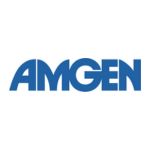 Amgen
Amgen
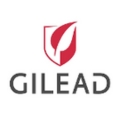 Gilead Sciences
Gilead Sciences
 Moderna
Moderna
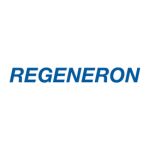 Regeneron Pharmaceuticals
Regeneron Pharmaceuticals
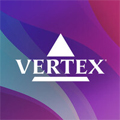 Vertex Pharmaceuticals
Vertex Pharmaceuticals
 Biogen
Biogen
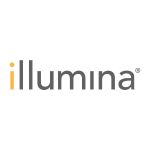 Illumina
Illumina
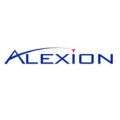 Alexion Pharmaceuticals
Alexion Pharmaceuticals
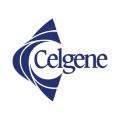 Celgene
Celgene
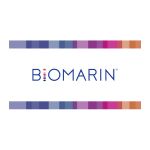 BioMarin Pharmaceutical
BioMarin Pharmaceutical
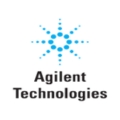 Agilent Technologies
Agilent Technologies
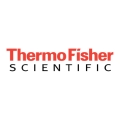 Thermo Fisher Scientific
Thermo Fisher Scientific
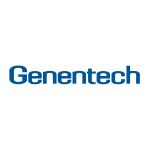 Genentech
Genentech
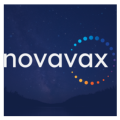 Novavax
Novavax
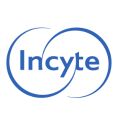 Incyte Corporation
Incyte Corporation
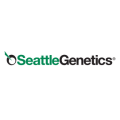 Seattle Genetics
Seattle Genetics
 Bristol Myers Squibb
Bristol Myers Squibb
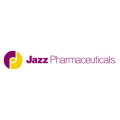 Jazz Pharmaceuticals
Jazz Pharmaceuticals
GAO Tek’s life science equipment and their applications in other industries are listed on this: page:
